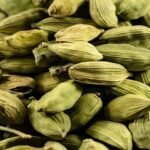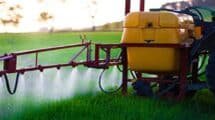Budget 2024: An attempt to entice farmers, or a dry spell?
When Prime Minister Narendra Modi returned for a third term in office, the first document he signed was for the release of the 17th installment of the PM Kisan Nidhi scheme. Furthermore, in its first cabinet meeting, the NDA government approved a new Minimum Support Price (MSP) for 14 kharif crops in the 2024-25 marketing season, recommending the highest absolute increase over the previous year for oilseeds and pulses as a signal to farmers to choose these crops in order to reduce the country’s import bill.
These moves in the farming sector, as well as their timing, highlight the importance of this sector to the Modi government’s agenda of making India the world’s third-largest economic power.
According to experts, the upcoming budget, which will be tabled by Union Finance Minister Nirmala Sitharaman in the second half of July, will include some populist measures for farmers after last month’s Lok Sabha election results did not go as planned, owing to the party’s performance in rural and semi-urban India, as well as the Hindi heartland.
According to the CII, the agriculture sector is expected to grow by 3.7% in the current fiscal year, up from 1.4% the previous year. Also Read | Spice Board, CII Kerala, FACE to host Kerala Spice Conference & Exposition
Sowing seeds for the upcoming state elections
As Budget 2024 approaches, the agricultural sector will likely receive increased attention because it provides a living for approximately 250 million farmers and informal workers.
The BJP’s vote share dropped in semi-urban and rural areas, to 36.6 percent and 35 percent, respectively. This represented a significant shift for the BJP from 2019, when it had a 39.5 percent vote share in rural areas, 36.8 percent in semi-urban sectors, and 33.6 percent in urban areas.
After suffering in recent elections, mostly in rural areas, the new NDA government would almost certainly find newer ways to support farmers in the upcoming budget, especially since some key agricultural states like Maharashtra and Haryana are up for state elections soon, according to Shweta Saini, an agricultural economist and co-founder of Arcus Policy Research, who also believes that “Indian policymaking is very tricky- particularly in agriculture.”
“There is a strong possibility of the announcement of incentive and welfare schemes for development in rural and semi-urban areas,” stated Tulsi Lingareddy, senior economist, Financial Markets, Sustainable Finance, and Agriculture.
The PM-KISAN scheme is in focus.
During the interim budget, the instalment of the Centre’s flagship cash transfer scheme, PM KISAN, was expected to increase significantly. Despite these expectations, Sitharaman kept the budget unchanged.
However, experts now believe there is a compelling case for strengthening the scheme in the Union budget 2024.
The current PM Kisan disbursement represents approximately 3-5 percent of a farm family’s income. The disbursement began in 2019, and given the cost inflation over the last five years, as well as the backdrop of export curbs on a few commodities, Pushan Sharma, Director of Research at CRISIL, believes the quantum disbursed per farm family may increase.
He suggests that the additional disbursement could be used as a subsidy for farmers to cover the costs of various farming inputs. This could increase their spending on higher-quality agricultural products such as advanced pesticides, hybrid seeds, and crop nutrients, resulting in higher yields, according to Sharma. “Moreover, with climate change and unpredictable monsoon patterns affecting farmers, this additional income support can help them use more resilient farming methods.”
Agriculture infrastructure requires “intervention”
Experts say that intervention in agri infrastructure is urgently needed because farmers frequently face post-harvest losses.
“As of FY23, CIPHET reported post-harvest losses of Rs. 92,650 crores annually and thus, if the budget allocation is increased under the Agriculture Infrastructure Fund (AIF) scheme, it could increase the storage and warehousing capabilities in the country which would assist farmers in reducing post-harvest losses thereby improving their realisations,” states Sharma.
When asked about farmers’ expectations for the upcoming budget, Dr. Lingareddy stated, “Focus may be on connecting farmers/Farmers Producer Organisations to markets through promoting digital infrastructure and e-commerce in addition to promoting physical market infrastructure and warehousing.”
Agriculture exports
The government has prohibited the export of wheat and non-basmati white rice, as well as sugar. “Having suffered on account of banned exports and lower crop due to El Nino, some support may be extended for sugarcane farmers,” Saini states.
According to the government, India’s agriculture exports, which are currently worth more than $50 billion, are expected to double by 2030 to $100 billion.
Crop diversification, export promotion, and import substitution in oilseeds/pulses are areas where more policy intervention is required, according to Anand Ramanathan, Partner and Consumer Products and Retail Sector Leader at Deloitte India.
Potential in the Agribusiness Ecosystem
Industry experts believe that the Agriculture Accelerator Fund and the Digital Public Infrastructure Fund will be focused on enhancing the agribusiness ecosystem in the country.
Startups focused on infield technology, such as drone applications, precision farming, satellite imagery, and IoT, that will assist farmers in transitioning to modern agriculture from traditional practices, should be prioritized, according to Sharma.
Also Read | Rajiv Gandhi Centre for Biotechnology started big project to help tribal communities
Interim Budget Recap
FM Sitharaman announced in the interim budget that the government will develop a strategy to make the country self-sufficient in edible oils by increasing domestic oilseed output, launch a comprehensive program to support dairy farmers, establish five integrated aqua parks, and launch a new climate resilient scheme for fisheries development under the blue economy 2.0.
Making India self-sufficient in oilseeds such as mustard, groundnut, sesame, soybean, and sunflower is expected to remain a budget priority, as India currently imports a significant amount of edible oils to meet domestic demand. During the 2022-23 marketing year (November to October), India imported nearly 165 lakh tonnes of cooking oils worth nearly Rs 1.4 lakh crore.


















Add Comment